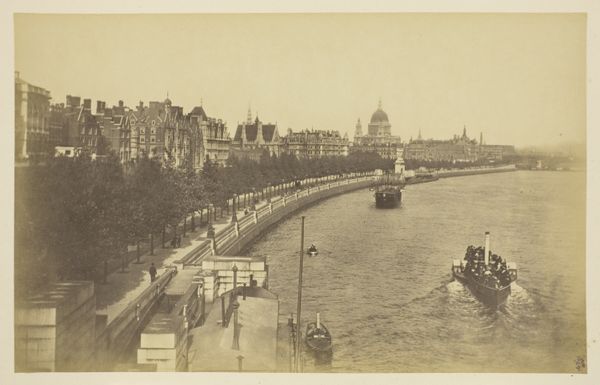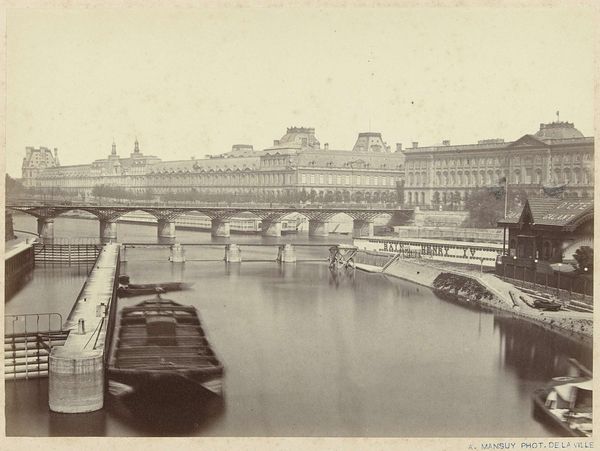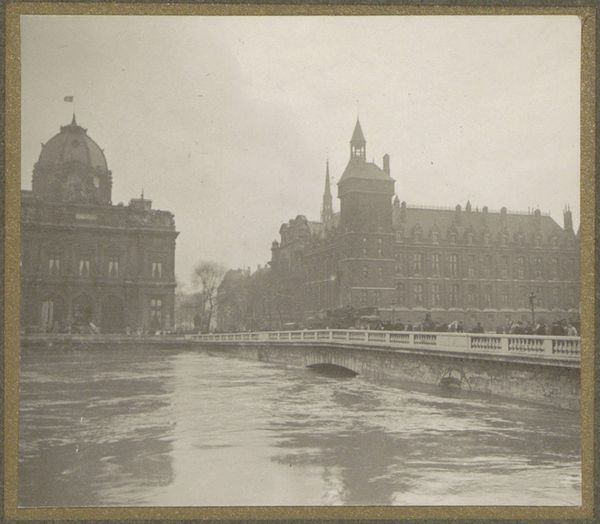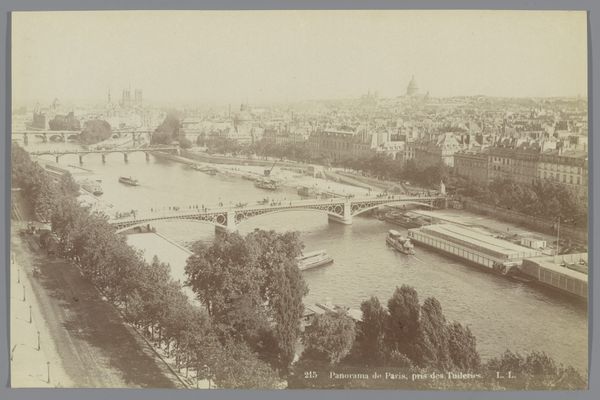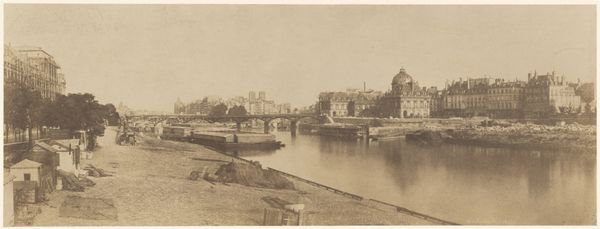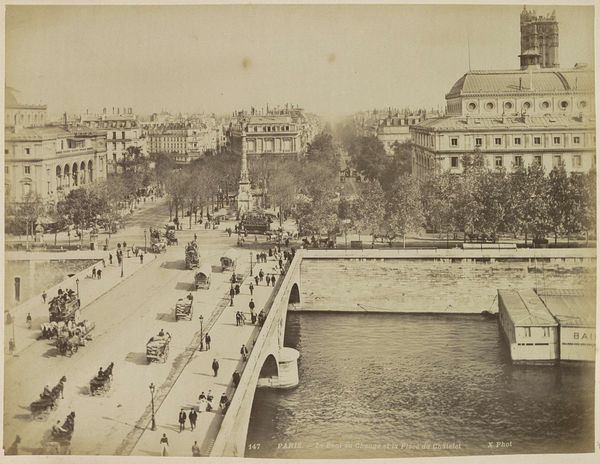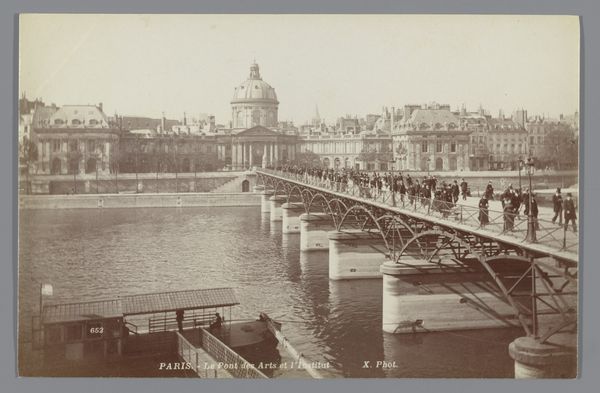
photography, albumen-print
#
landscape
#
river
#
photography
#
historical photography
#
cityscape
#
albumen-print
Dimensions: height 120 mm, width 185 mm
Copyright: Rijks Museum: Open Domain
Curator: This albumen print captures a rather grand view of Paris; specifically, "Gezicht op de Seine, de Pont au Change en het Paleis van Justitie, Parijs," which translates to "View of the Seine, the Pont au Change and the Palace of Justice, Paris," created sometime between 1889 and 1900. Editor: The immediate impression is one of formidable civic presence. The stonework and the deliberate architectural lines exude an imposing quality, which really contrasts with the smaller figures crossing the bridge, so you feel the city's grandeur more keenly. Curator: Absolutely. Structurally, the artist utilizes a high vantage point and a very wide-angle perspective to compress a lot of information, layering space in an almost classical manner. The Palace of Justice is prominently featured, creating a dense, horizontally oriented mass. Editor: It speaks volumes about the ambition and public-facing identity of Paris during that era. Look at the number of horse-drawn carriages parading over that bridge, what an impression it would have made on its citizens! I’m drawn to what it tells us about daily life then, about the rhythm and flow of commerce and citizenry around these major institutions. Curator: Note also how the composition balances this heavy architecture with the horizontal sweep of the Seine and the bridge that acts as a visual connector. The limited tonal range inherent to the albumen process reinforces the image’s classical gravitas. Editor: It’s fascinating how the photograph freezes a moment of transition—the end of one century, on the cusp of the next, when we see an old kind of city. I notice, too, in the distant background a small ghostly spire on the horizon; if I'm not mistaken, is that the Eiffel Tower? What would that juxtaposition have communicated at the time? Curator: A prescient reading, undoubtedly. And one could say this early photograph functions as an interesting semiotic object: It employs perspective, light, and architectural motifs to express power. Editor: Reflecting on the function of this image within the larger context of Parisian social history is compelling; that contrast of architectural imposition alongside the flux and the industry below. It gives a distinct idea of its period. Curator: Agreed. I've learned so much through that layered observation. Thank you!
Comments
No comments
Be the first to comment and join the conversation on the ultimate creative platform.



